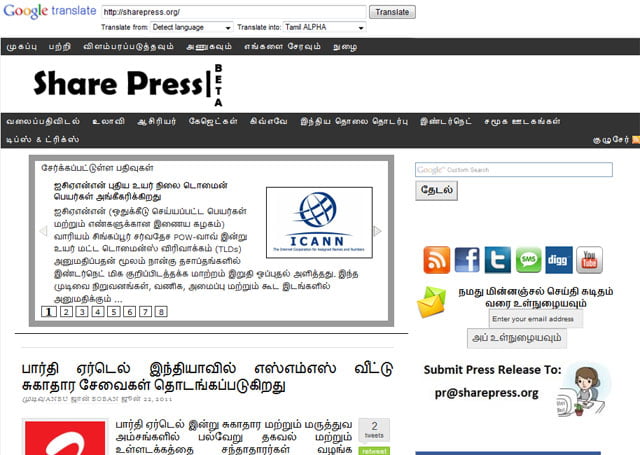Google has expanded its translation services to include five more Indian languages — Bengali, Gujarati, Kannada, Tamil and Telugu, thus reaching out millions of new local users. According to Google, more than 500 million people speak these five languages in India and other neighboring countries. Currently Google Translate support around 63 languages from around the globe.
“Beginning today, you can explore the linguistic diversity of the Indian sub—continent with Google translate, which now supports five new experimental alpha languages: Bengali, Gujarati, Kannada, Tamil and Telugu.
“In India and Bangladesh alone, more than 500 million people speak these five languages. Since 2009, we’ve launched a total of 11 alpha languages, bringing the current number of languages supported by Google Translate to 63,” said Ashish Venugopal, research scientist at Google Blog.
New languages are still in alpha stages, so there will be more regular development on this languages in the future. One can expect translations for these new alpha languages to be less fluent and include many more untranslated words than some of the more mature languages like Spanish or Chinese which have much more of the web content that powers its statistical machine translation approach. Google’s research to improve its Japanese language translation has helped to add Subject Object Verb (SOV) based languages ( Indian languages often use Subject Object Verb (SOV) to form sentences, unlike English which uses the Subject Verb Object (SVO) ) , While the German, Turkish and Russian language translation expertise has helped it deal with the agglutination problem.
Google has also implemented a transliterated input method through which when you type any English word from a regular keyboard, it will automatically get translated to the Indian language that you’ve chosen, Try it out here. This new addition has bring great possibilities to web users as they can now view sites and also write there contents on sites/blogs in their own native language. Google translation is helping to remove the barrier of language and bringing people closer. You can also suggest improvements by sending feedback through the Google Translate discussion group.
So, just try this new awesome addition to Google translation service and tell us your experience and opinion on it.




